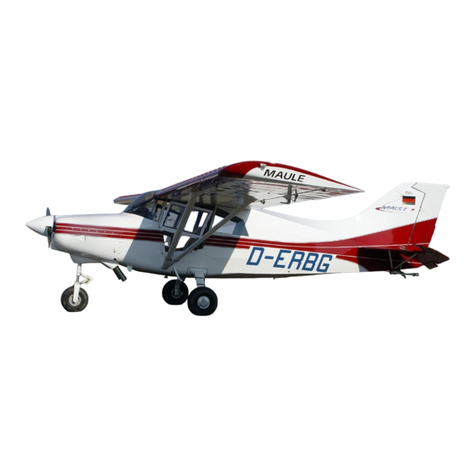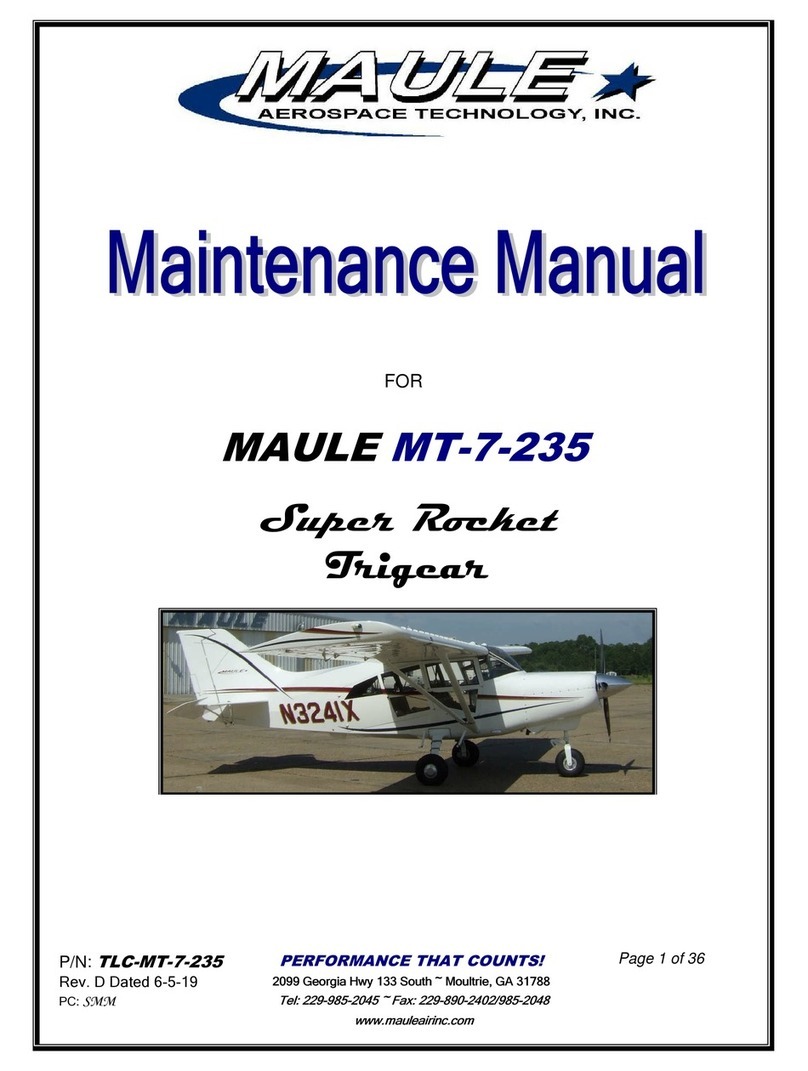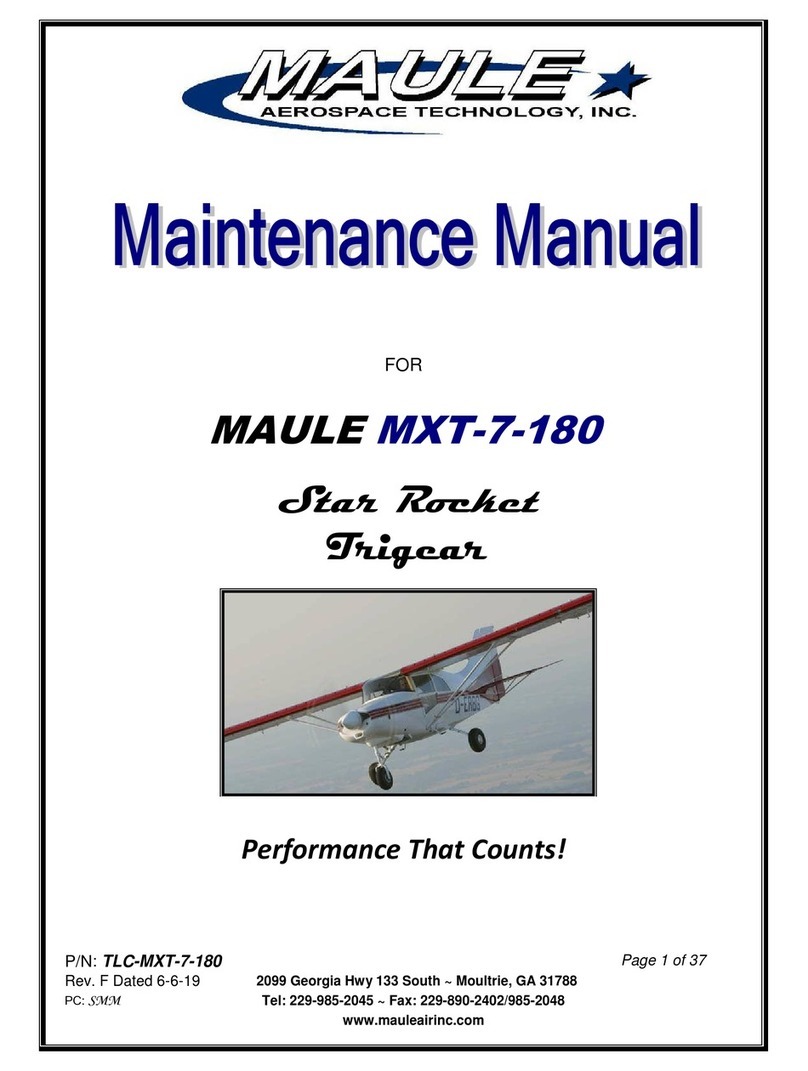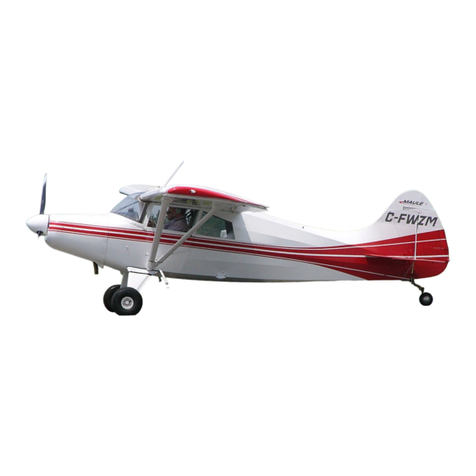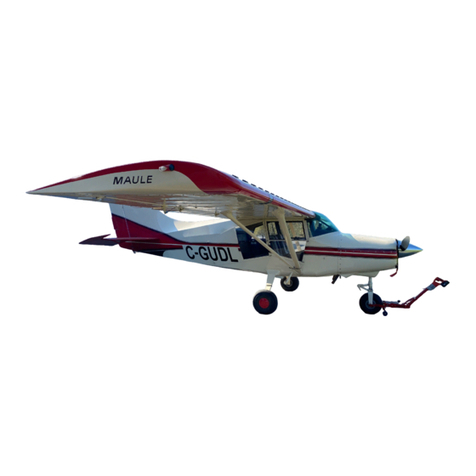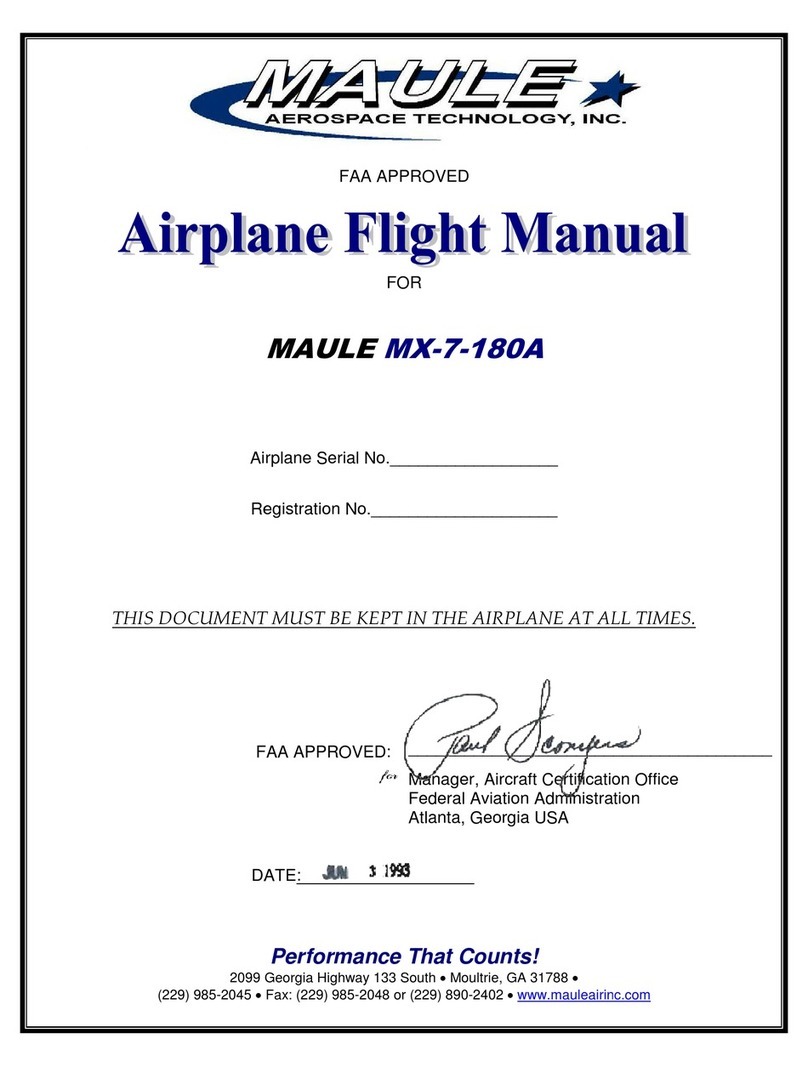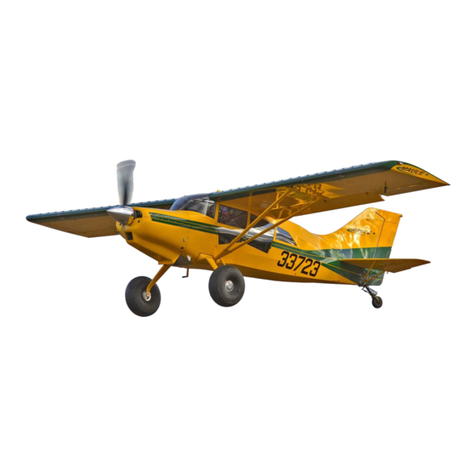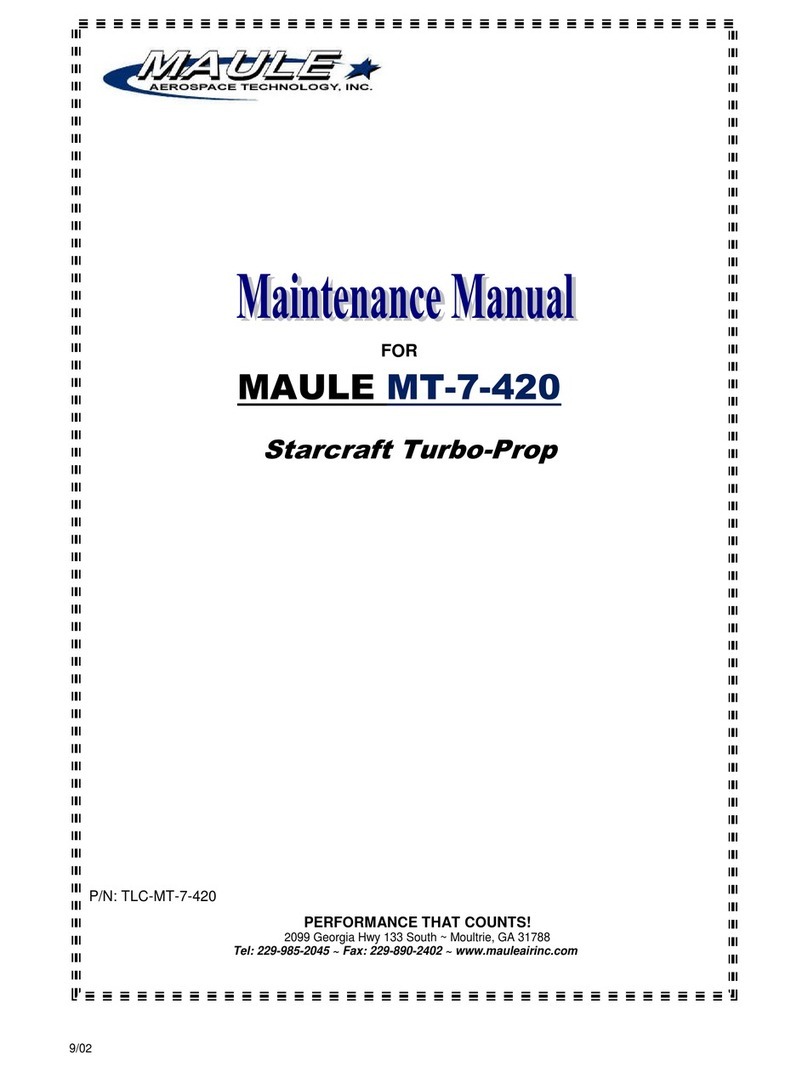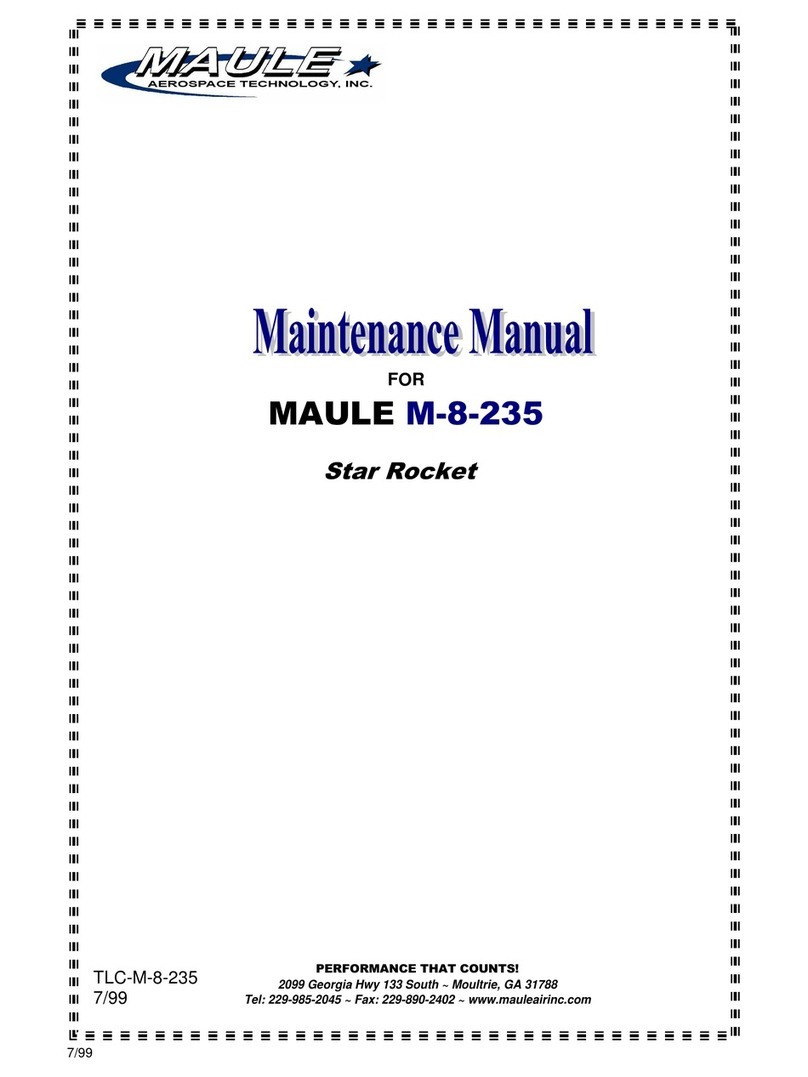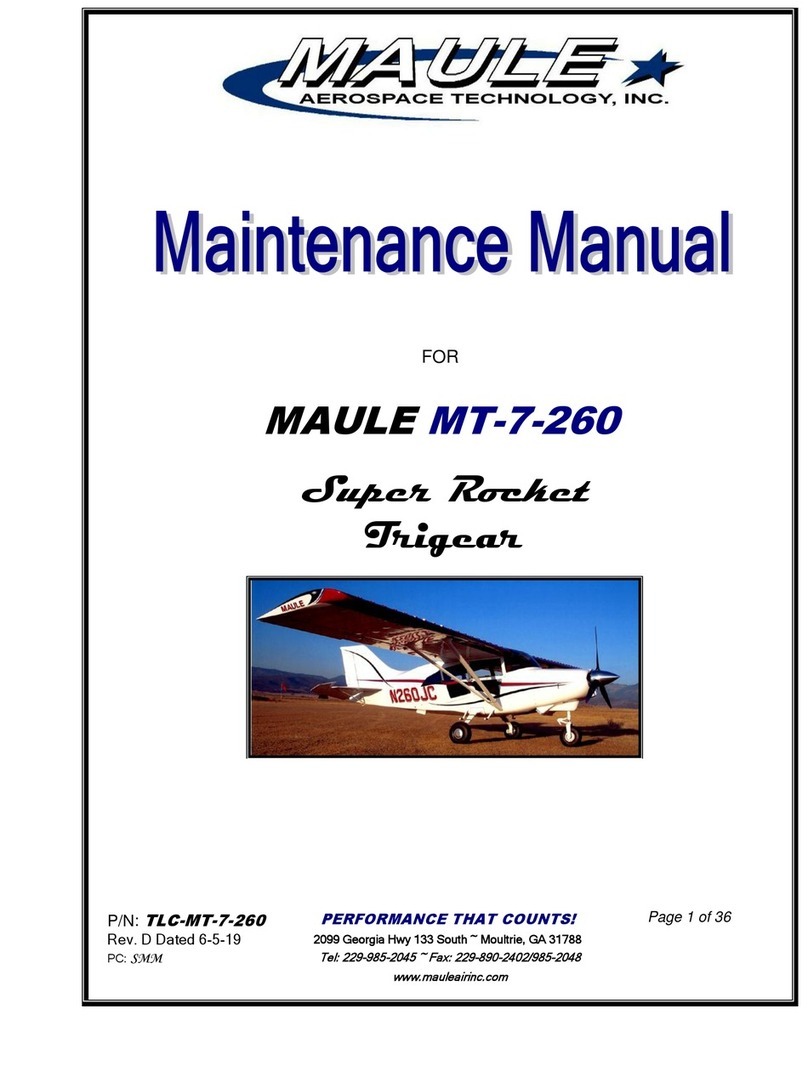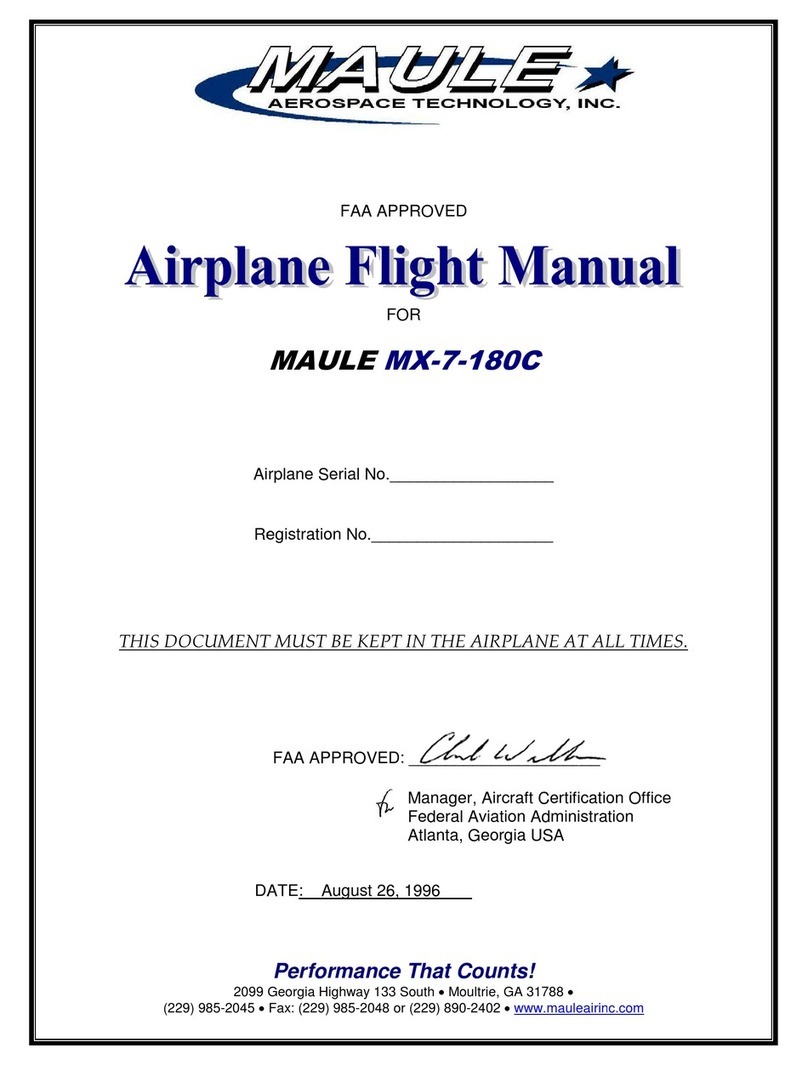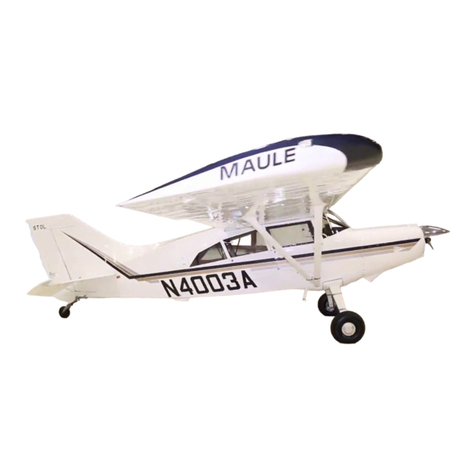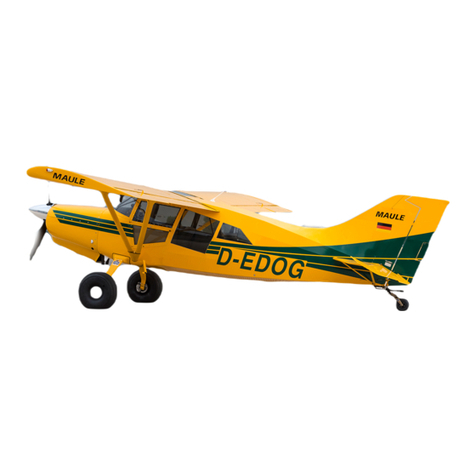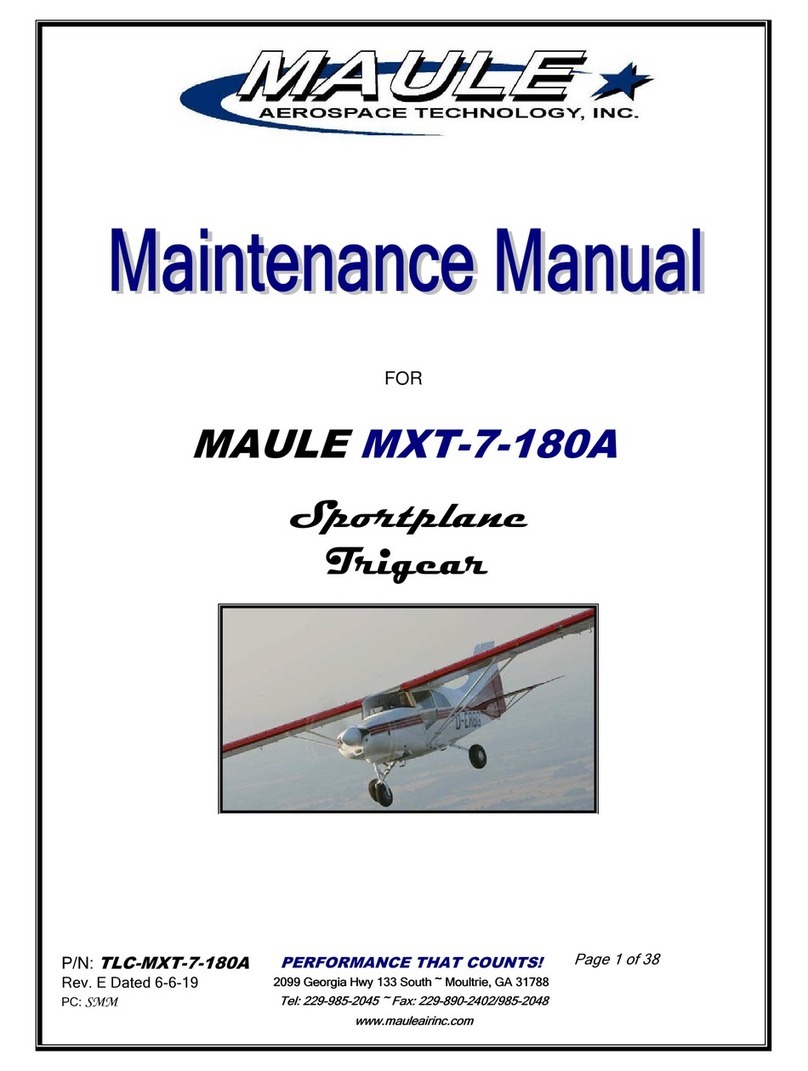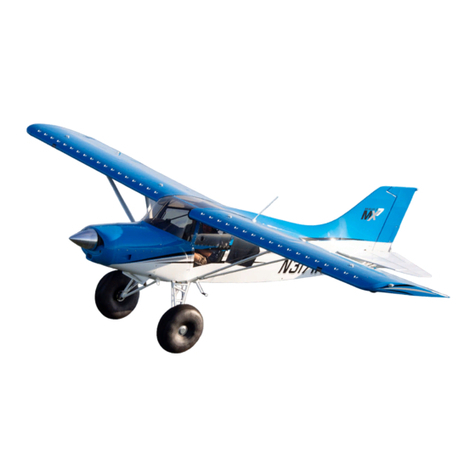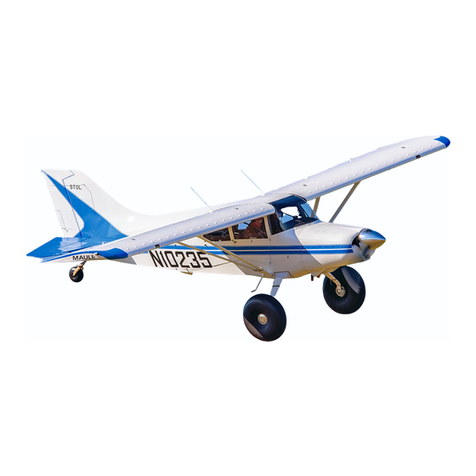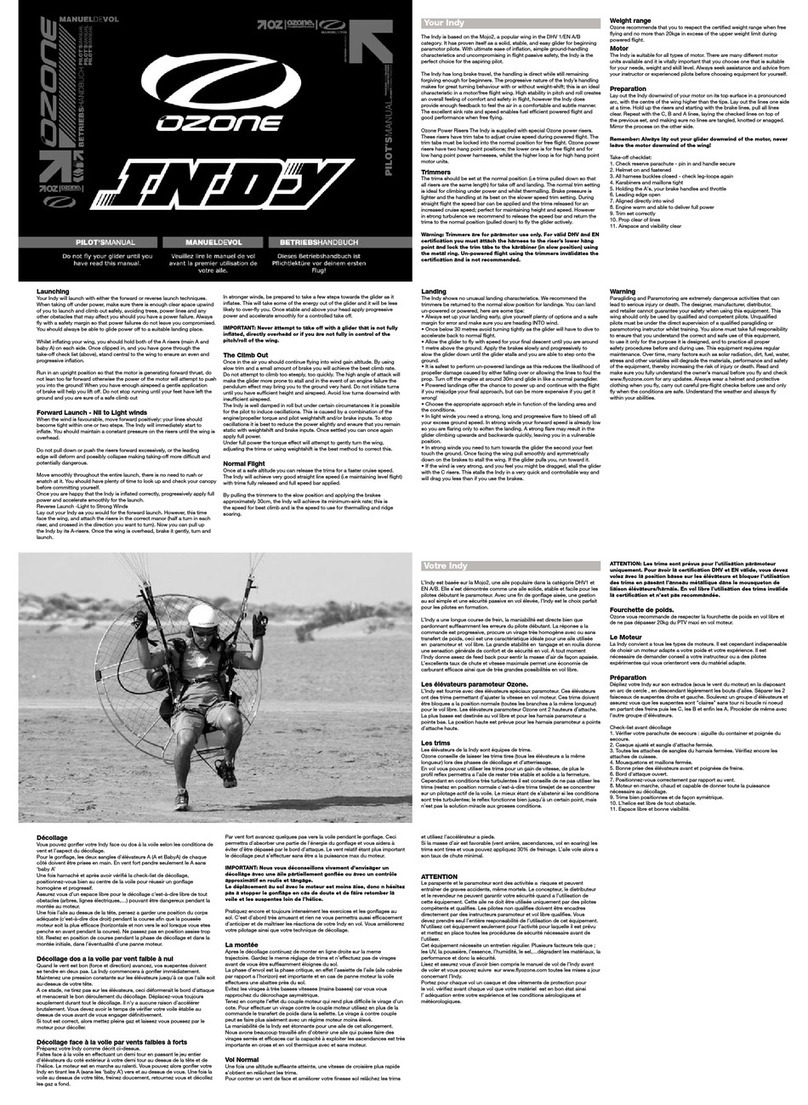
MAULE AEROSPACE TECHNOLOGY, INC.
AIRPLANE FLIGHT MANUAL
MAULE MT-7-260
Page ii
LOG OF SUPPLEMENTS
SUPP.
NO. NO. OF
PAGES
DESCRIPTION
DATE
1 21 Installation of Wipline 3000 Amphibious Floats - Maule Drawing 9186A.
(03/12/99) Rev. A 08/19/02
2 8 Installation of Aqua 2400 Floats - Maule Drawing 9135A, Rev. Eor later.
(11/19/99) Rev. A 08/19/02
3 6 English to Metric Conversion Charts - required in aircraft when registered in
Canada. 09/03/99
4 5 Inst. of S-TEC System 20 Single Axis Autopilot Model ST-810-20 (14v) -
Maule Drawing 9197A, Rev. Cor later. (Sea) 07/05/01
5 5 Inst. of S-TEC System 30 Two Axis Autopilot Model ST-810-30 (14v) - Maule
Drawing 9197A, Rev. Cor later. (Sea) 07/05/01
6 4 Inst. of S-TEC System 20 Single Axis Autopilot Model ST-872-20 (28v) -
Maule Drawing 9211A. (Land) 06/25/01
7 5 Inst. of S-TEC System 30 Two Axis Autopilot Model ST-872-30 (28v) - Maule
Drawing 9211A. (Land) 06/25/01
- 5 Inst. of S-TEC System 20 Single Axis Autopilot Model ST-872-20 (28v) -
Maule Drawing 9211A. (Sea) 06/25/01
- 5 Inst. of S-TEC System 30 Two Axis Autopilot Model ST-872-30 (28v) - Maule
Drawing 9211A. (Sea) 06/25/01
- 3 Inst. of GARMIN GNS-430
(GPS/NAV/COMM)
System - Maule Drawing 7205A. 01/03/01
- 3 Inst. of GARMIN GNC-300XL
(GPS/COMM)
System - Maule Drawing 7207A. 01/03/01
- 3 Inst. of GARMIN GNC-250XL
(GPS/COMM)
System - Maule Drawing 7209A. 01/03/01
- 3 Installation of Bendix-King KLX-135A (GPS/COMM) System - Maule Drawing
7219A. 01/03/01
- 5 Installation of Apollo MX20 Multi-Function Display - Maule Drawing 7265A. 08/15/02
- 8 Installation of GARMIN GNC-420 (GPS/COMM) System - Maule Drawing
7251A. 06/30/03
- 9 Installation of GARMIN GNS-530 (GPS/NAV/COMM) System - Maule Drawing
7253A. 06/30/03
- 4 Installation of GARMIN GTX-330 Mode S Transponder Traffic Information
System (TIS) - Maule Drawing 7255A. 06/30/03
- 3 Operation of aircraft when Micro AeroDynamics Vortex Generator System is
installed in accordance with Maule Drawing 9177A. 12/16/05
